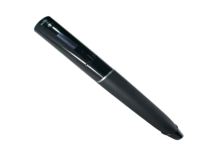
Adobe Flash is a multimedia software platform used for production of animations, rich web applications, desktop applications, mobile apps, mobile games, and embedded web browser video players. Flash displays text, vector graphics, and raster graphics to provide animations, video games, and applications. It allows streaming of audio and video, and can capture mouse, keyboard, microphone, and camera input.
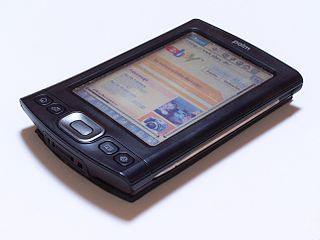
A personal digital assistant (PDA), also known as a handheld PC, is a variety mobile device which functions as a personal information manager. PDAs have been mostly displaced by the widespread adoption of highly capable smartphones, in particular those based on iOS and Android.
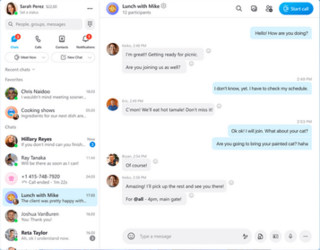
Skype is a proprietary telecommunications application operated by Skype Technologies, a division of Microsoft, best known for VoIP-based videotelephony, videoconferencing and voice calls. It also has instant messaging, file transfer, debit-based calls to landline and mobile telephones, and other features. Skype is available on various desktop, mobile, and video game console platforms.
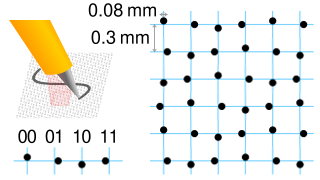
Digital paper, also known as interactive paper, is patterned paper used in conjunction with a digital pen to create handwritten digital documents. The printed dot pattern uniquely identifies the position coordinates on the paper. The digital pen uses this pattern to store handwriting and upload it to a computer.

NetworkManager is a daemon that sits on top of libudev and other Linux kernel interfaces and provides a high-level interface for the configuration of the network interfaces.
The Fly Pentop Computer and FLY Fusion Pentop Computer are personal electronics products manufactured by LeapFrog Enterprises Inc. They are called a "pentop" computer by its manufacturer, because they consist of a pen with a computer inside.

BumpTop was a 3D desktop environment that simulates the normal behavior and physical properties of a real-world desk and enhances it with automatic tools to organize its contents. It is aimed at stylus interaction, making it more suitable for tablet computers and handheld PCs. It was created at the University of Toronto as Anand Agarawala's master's thesis. Agarawala also gave a presentation at the TED conference about his idea. The 1.0 version was released on April 8, 2009, along with a fully featured pro version as a paid upgrade. On April 30, 2010 the author announced that BumpTop was being discontinued and that they were taking the software "in an exciting new direction." Two days later, it was announced that the company had been acquired by Google. On January 5, 2011, Google released a sneak preview video of Android 3.0 Honeycomb showing a 3D desktop with features purportedly taken from BumpTop.
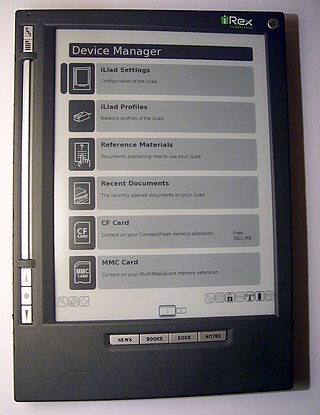
The iLiad was an electronic handheld device, or e-Reader, which could be used for document reading and editing. Like the Barnes and Noble nook, Sony Reader or Amazon Kindle, the iLiad made use of an electronic paper display. In 2010, sales of the iLiad ended when its parent company, iRex Technologies, filed for bankruptcy.
Anoto Group AB is a Swedish cloud based software provider (SaaS). It primarily dispenses patented dot pattern technology which provides a methodology for accumulating digital big data from analogue inputs.

Adobe AIR is a cross-platform runtime system currently developed by Harman International, in collaboration with Adobe Inc., for building desktop applications and mobile applications, programmed using Adobe Animate, ActionScript, and optionally Apache Flex. It was originally released in 2008. The runtime supports installable applications on Windows, macOS, and mobile operating systems, including Android, iOS, and BlackBerry Tablet OS.
This page is a comparison of notable remote desktop software available for various platforms.
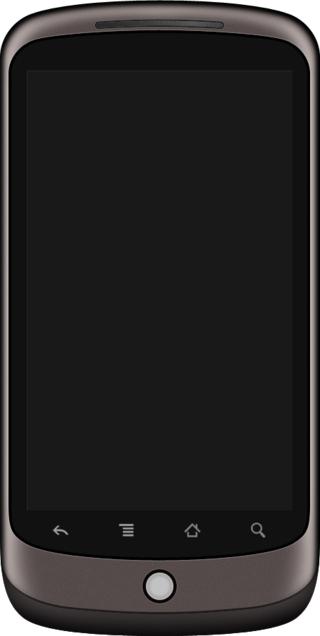
The Nexus One is an Android smartphone designed and manufactured by HTC as Google's first Nexus smartphone. The Nexus became available on January 5, 2010, and features the ability to transcribe voice to text, an additional microphone for dynamic noise suppression, and voice guided turn-by-turn navigation to drivers.

Eye-Fi was a company based in Mountain View, California, that produced SD memory cards with Wi-Fi capabilities. Using an Eye-Fi card inside a digital camera, one could wirelessly and automatically upload digital photos to a local computer or a mobile device such as a smartphone or tablet computer. The company ceased business in 2016.

The Nokia N900 is a smartphone made by Nokia. It supersedes the Nokia N810. Its default operating system, Maemo 5, is a Linux-based OS originally developed for the Nokia 770 Internet Tablet. It is the first Nokia device based upon the Texas Instruments OMAP3 microprocessor with the ARM Cortex-A8 core. Unlike the three Nokia Internet tablets preceding it, the Nokia N900 is the first Maemo device to include phone functionality.

The Motorola Flipout is a phone made by Motorola and released in June 2010. Its touchscreen is 2.8 inches in size. It also has a 3.2-megapixel camera and comes in a wide variety of colors such as "Poppy Red", "Brilliant Blue″, "Licorice Black", "White", and "Saffron". However, in Australia, only "Poppy Red" and "Licorice Black" are available. The Flipout runs on Android 2.1. Its square-shaped body has two parts that rotate near the bottom-right corner to reveal a five-row QWERTY keyboard below the screen. It has an accelerometer and includes a web browser with Adobe Flash Lite 3.0. It also has a 720 MHz processor with a QVGA 320x240 pixel display.
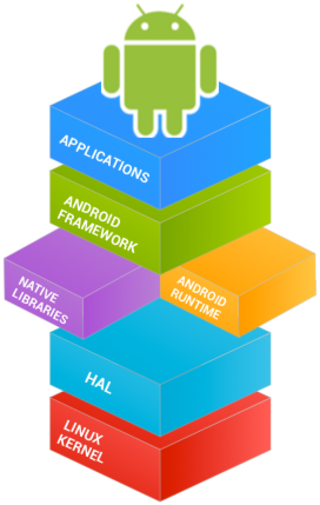
Android software development is the process by which applications are created for devices running the Android operating system. Google states that "Android apps can be written using Kotlin, Java, and C++ languages" using the Android software development kit (SDK), while using other languages is also possible. All non-Java virtual machine (JVM) languages, such as Go, JavaScript, C, C++ or assembly, need the help of JVM language code, that may be supplied by tools, likely with restricted API support. Some programming languages and tools allow cross-platform app support. Third party tools, development environments, and language support have also continued to evolve and expand since the initial SDK was released in 2008. The official Android app distribution mechanism to end users is Google Play; it also allows staged gradual app release, as well as distribution of pre-release app versions to testers.
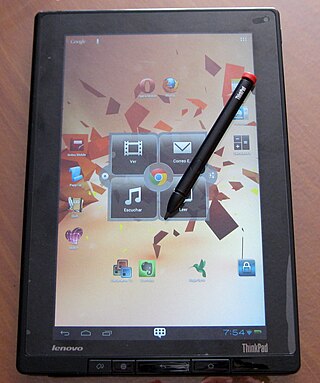
The ThinkPad Tablet is a tablet computer made by Lenovo as part of its series of Android-based tablet devices and is targeted towards business users. Lenovo's tablet offerings are available in both ThinkPad and IdeaPad variants. While the ThinkPad Tablets are designed for business, the IdeaPad tablets, like the laptops of the same name, are meant for home and personal use. These tablets are different from Lenovo's X Series tablets, which are laptop/tablet hybrids and which use Microsoft Windows as their operating system.
Miracast is a standard for wireless connections from sending devices to display receivers, introduced in 2012 by the Wi-Fi Alliance. It can roughly be described as "HDMI over Wi-Fi", replacing the cable from the device to the display.
Microsoft mobile services are a set of proprietary mobile services created specifically for mobile devices, they are typically offered through mobile applications and mobile browser for Windows Phone, | platforms, BREW, and Java. Microsoft's mobile services are typically connected with a Microsoft account and often come preinstalled on Microsoft's own mobile operating systems while they are offered via various means for other platforms. Microsoft started to develop for mobile computing platforms with the launch of Windows CE in 1996 and later added Microsoft's Pocket Office suite to their Handheld PC line of PDAs in April 2000. From December 2014 to June 2015, Microsoft made a number of corporate acquisitions, buying several of the top applications listed in Google Play and the App Store including Acompli, Sunrise Calendar, Datazen, Wunderlist, Echo Notification Lockscreen, and MileIQ.

The Librem 5 is a smartphone manufactured by Purism that is part of their Librem line of products. The phone is designed with the goal of using free software whenever possible, includes PureOS, a Linux operating system, by default, and as of 2021 is the only smartphone recommended by the Free Software Foundation. Like other Librem products, the Librem 5 focuses on privacy and freedom, and includes features like hardware kill switches, and easily-replaceable components. Its name, with a numerical "5", refers to its screen size, and not a release version. After an announcement on August 24, 2017, the distribution of developer kits and limited pre-release models occurred throughout 2019 and most of 2020. The first mass-production version of the Librem 5 was shipped on November 18, 2020.
